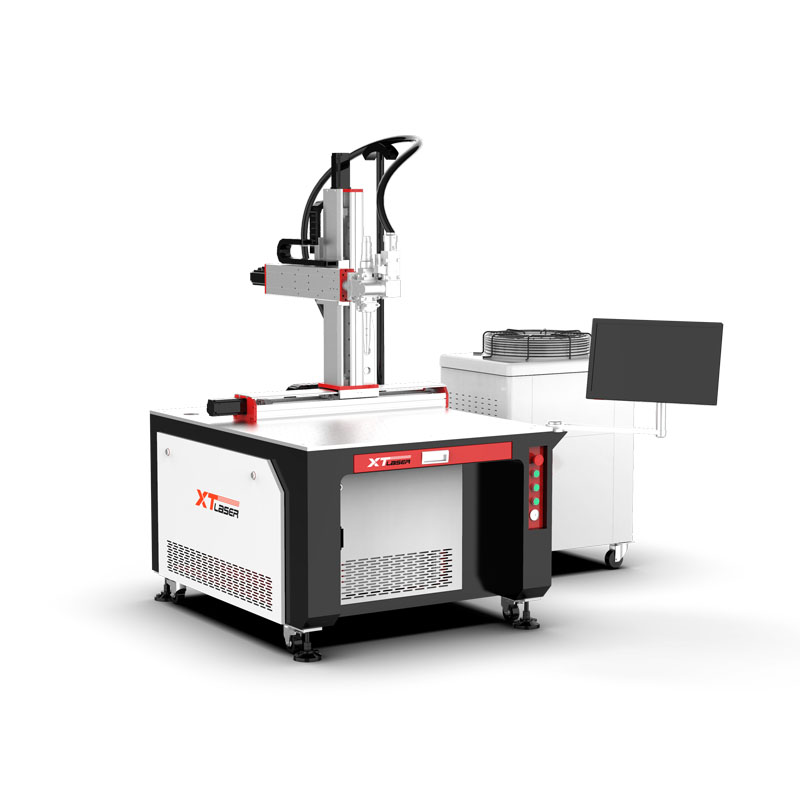Advancing Automation: Exploring Welding Processes Automated by Automatic Welding Machines
2024-03-13
Welding serves as a cornerstone in various industries, providing the foundation for constructing sturdy and resilient structures. With the evolution of technology, automatic welding machines have revolutionized welding processes, offering increased efficiency, precision, and productivity. These machines can automate a wide range of welding processes, catering to diverse applications across industries. In this blog, we'll delve into the welding processes that can be automated with automatic welding machines, showcasing their versatility and impact on modern manufacturing.
Gas Metal Arc Welding (GMAW):
Gas Metal Arc Welding, also known as MIG (Metal Inert Gas) welding, is a widely used welding process in which a continuous solid wire electrode is fed through a welding gun, along with a shielding gas, to create an arc between the electrode and the workpiece. Automatic welding machines can automate GMAW processes, offering precise control over parameters such as wire feed speed, voltage, and shielding gas flow rate to produce consistent and high-quality welds.
Gas Tungsten Arc Welding (GTAW):
Gas Tungsten Arc Welding, commonly referred to as TIG (Tungsten Inert Gas) welding, utilizes a non-consumable tungsten electrode and a shielding gas to create a weld pool. Automatic welding machines can automate GTAW processes, providing accurate control over arc characteristics, welding speed, and filler metal deposition to achieve precise and aesthetically pleasing welds, particularly in applications requiring high-quality weld finishes and low distortion.
Flux-Cored Arc Welding (FCAW):
Flux-Cored Arc Welding is a welding process that uses a tubular electrode filled with flux to shield the weld pool from atmospheric contamination. Automatic welding machines can automate FCAW processes, enabling high deposition rates, deep penetration, and efficient weld metal deposition in various welding positions, making it suitable for applications requiring high productivity and weld strength, such as heavy fabrication, shipbuilding, and structural steel construction.
Submerged Arc Welding (SAW):
Submerged Arc Welding is a welding process that utilizes a granular flux and a continuous wire electrode to create a weld pool beneath a layer of molten flux. Automatic welding machines can automate SAW processes, providing precise control over welding parameters, such as arc voltage, travel speed, and flux feeding rate, to produce high-quality welds with minimal spatter and excellent penetration, making it suitable for applications requiring high deposition rates and thick-section welding.
Resistance Spot Welding (RSW):
Resistance Spot Welding is a welding process that joins metal sheets or components by applying pressure and passing an electric current through the workpieces, causing localized melting and fusion. Automatic welding machines can automate RSW processes, ensuring consistent electrode force, current flow, and welding time to produce strong and reliable spot welds, making it suitable for automotive body assembly, appliance manufacturing, and sheet metal fabrication.
Laser Welding:
Laser Welding is a welding process that utilizes a high-energy laser beam to melt and fuse materials together. Automatic welding machines can automate laser welding processes, offering precise control over laser power, beam focus, and welding speed to produce high-quality welds with minimal heat input and distortion, making it suitable for precision welding applications in the aerospace, automotive, and electronics industries.
Conclusion:
In conclusion, automatic welding machines offer unparalleled versatility in automating a wide range of welding processes, from conventional arc welding methods to advanced laser welding techniques. By providing precise control over welding parameters, consistent weld quality, and increased productivity, automatic welding machines play a crucial role in modern manufacturing, catering to diverse applications across industries and driving innovation and efficiency in welding processes. As technology continues to advance, the capabilities of automatic welding machines are expected to expand further, opening up new possibilities for automation and optimization in welding operations.



